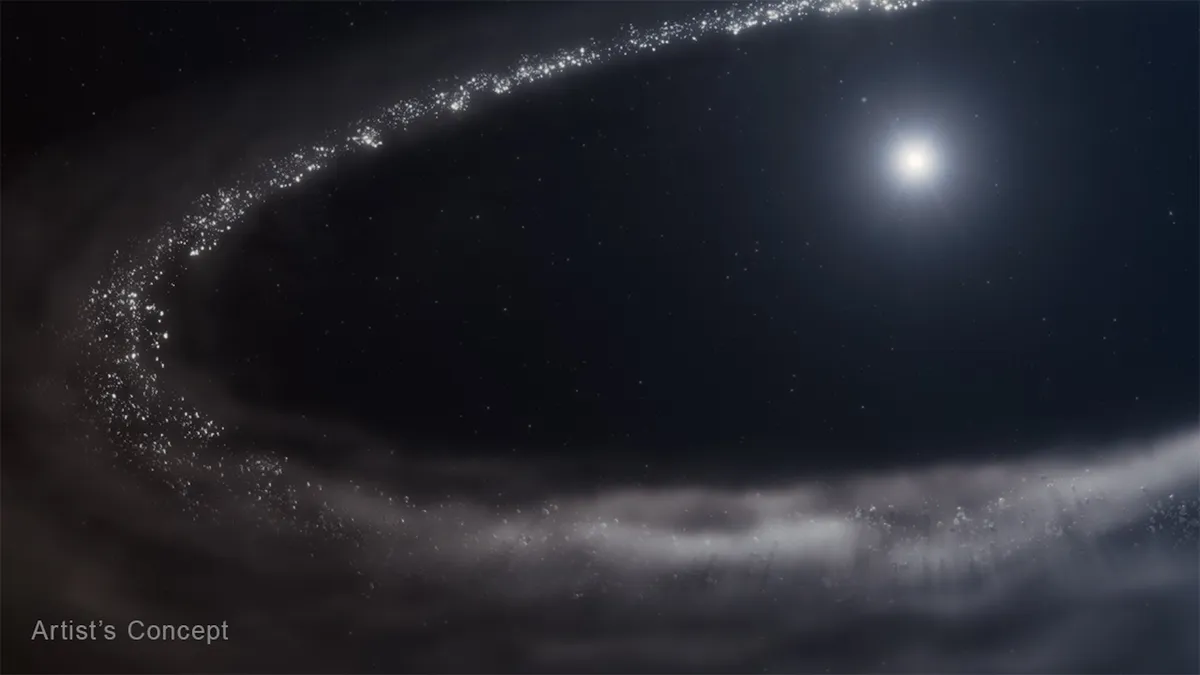The James Webb Space Telescope has detected water ice in a cold debris disk around a young star system, providing valuable insights into the formation of planets and potentially habitable worlds, according to a new study published in the journal Nature Astronomy.
Researchers using Webb's sensitive infrared instruments observed the star system HD 146520, located approximately 136 light-years from Earth. The star, similar in mass to our Sun but only about 20 million years old, is surrounded by a dusty disk of material left over from its formation—a cosmic construction zone where planets may be currently forming.
Telltale Signatures of Water Ice
"This is the first time we've been able to detect water ice in a debris disk at these distances from the star," said Dr. Isabel Rebollido, an astronomer at the Space Telescope Science Institute and lead author of the study. "Webb's infrared capabilities have given us a new window into understanding the ingredients available for planet formation."
The telescope's Mid-Infrared Instrument (MIRI) detected the distinctive spectral signature of crystalline water ice at temperatures of approximately -170°C (-274°F) in the outer regions of the disk, between 75 and 100 astronomical units from the star—roughly twice the distance from our Sun to Pluto.
This discovery is particularly significant because water is considered essential for life as we know it, and understanding how and where water ice is distributed in young planetary systems helps scientists piece together how habitable worlds might form.
Building Blocks of Planets
"What we're seeing is essentially a snapshot of what our own solar system might have looked like about 4.5 billion years ago during its formation," explained co-author Dr. Christine Chen of the Carnegie Institution for Science. "These icy particles are the building blocks that can eventually coalesce to form comets, larger planetary bodies, and potentially even deliver water to rocky planets in the habitable zone."
The researchers were also able to determine the size of the ice particles, finding most were between 1-10 micrometers—about the size of bacteria or particles in cigarette smoke. This size distribution provides clues about the physical processes occurring within the disk.
"The ice particles are significantly larger than typical interstellar dust grains, indicating they've grown through accretion," said Dr. Chen. "This is exactly what we would expect to see in the early stages of planetary formation."
Implications for Habitable Worlds
Scientists believe that most of Earth's water was delivered by icy asteroids and comets that formed in the outer regions of our solar system before migrating inward. The new Webb observations support this model of water delivery to inner terrestrial planets.
"Water is essential for life, but rocky planets like Earth form in hot, dry regions close to the star where water can't condense," said Rebollido. "Understanding how water from the outer regions makes its way to the inner planets is crucial for identifying potentially habitable worlds beyond our solar system."
The research team plans to use Webb to study additional debris disks around stars of different ages and masses to better understand how common such water ice reservoirs are and how they evolve over time.
The discovery adds to Webb's growing list of breakthrough observations since its launch in December 2021, further demonstrating the telescope's unprecedented capabilities for studying distant worlds and the building blocks of planetary systems.










